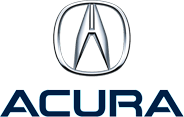Understanding the Three Different Types of CVTs
Continuously Variable Transmissions (CVTs) have been adopted by many manufacturers due to the desire for increased fuel efficiency. Unlike traditional transmissions with a fixed number of gears, CVTs offer a nearly infinite range of gear ratios, allowing the engine to operate at its optimal performance level. There are several types of CVT, each suited to different applications and performance needs. This article will explore the main types of CVT, their features, pros and cons, and unique applications.
Pulley-Based CVT
Overview
Pulley-based CVTs are the most common type of CVT found in the automotive industry. They use a system of variable-diameter pulleys connected by a belt or chain. The pulleys can change their diameter by moving together or apart, which alters the belt’s path and changes the gear ratio.
How It Works
A pulley-based CVT consists of two pulleys: the drive pulley (connected to the engine) and the driven pulley (connected to the wheels). Each pulley is made up of two cone-shaped halves that can move closer together or farther apart. When the halves move closer, the belt rides higher on the pulley, increasing the effective diameter and changing the gear ratio.
Benefits
- Fuel Efficiency: Pulley-based CVTs maintain the engine at its most efficient RPM range, resulting in better fuel economy compared to traditional automatic transmissions.
- Smooth Acceleration: The continuous gear ratio changes provide a smoother driving experience without the noticeable shifting between gears of conventional transmissions.
- Cost-Effectiveness: Pulley-based CVTs are relatively simple and cost-effective to produce, making them a popular choice for small to medium-sized cars.
Applications
Pulley-based CVTs are widely used in small to medium-sized passenger vehicles. Manufacturers like Toyota, Honda, and Nissan have incorporated this type of CVT in many of their models, providing drivers with a balance of efficiency and performance.
Toroidal CVT
Overview
Toroidal CVTs, also known as traction drive CVTs, use discs and rollers instead of pulleys and belts. This design allows for higher torque capacity, making them suitable for performance vehicles that require more power.
How It Works
A toroidal CVT consists of input and output discs and a set of rollers placed between them. The rollers tilt to vary the contact points on the discs, changing the gear ratio. The name “toroidal” comes from the torus-shaped surfaces of the discs.
Benefits
- Higher Torque Capacity: The robust design allows toroidal CVTs to handle higher torque levels, making them ideal for performance-oriented applications.
- Improved Durability: The absence of a belt reduces wear and tear, potentially increasing the transmission’s lifespan.
- Enhanced Efficiency: The traction drive mechanism can provide smoother and more efficient power transfer under high load conditions.
Applications
Toroidal CVTs are typically found in high-performance and luxury vehicles. Nissan’s Extroid CVT is a notable example, used in models like the Nissan Gloria and Nissan Cedric. This type of CVT is also being explored for use in hybrid and electric vehicles, where efficiency and torque management are crucial.
Hydrostatic CVT
Overview
Hydrostatic CVTs utilize hydraulic fluid to transfer power between the engine and the wheels. They are particularly suited for heavy-duty applications, such as agricultural and industrial machinery, where robust performance and precise control are essential.
How It Works
A hydrostatic CVT operates using a hydraulic pump and a hydraulic motor. The pump converts mechanical energy from the engine into hydraulic pressure, which is then used to drive the motor. The motor converts the hydraulic pressure back into mechanical energy to drive the wheels. By varying the displacement of the pump and motor, the transmission can change the gear ratio.
Benefits
- Robust Performance: Hydrostatic CVTs can handle high loads and provide consistent power delivery, making them ideal for heavy-duty applications.
- Precision Control: The hydraulic system allows for precise control of speed and torque, which is essential in agricultural and industrial environments.
- Versatility: These CVTs can be easily adapted to different types of machinery and vehicles, providing flexibility in various applications.
Applications
Hydrostatic CVTs are commonly used in tractors, construction equipment, and other heavy machinery. Their ability to handle high torque and provide precise control makes them indispensable in industries that require reliable and efficient power transfer.
Comparative Analysis
Fuel Efficiency
- Pulley-Based CVT: Generally offers the best fuel efficiency in everyday driving conditions, particularly in city traffic where smooth acceleration and deceleration are frequent.
- Toroidal CVT: Provides good fuel efficiency with the added benefit of handling higher torque, making it suitable for performance vehicles.
- Hydrostatic CVT: Fuel efficiency is secondary to robustness and control, but it can still offer reasonable efficiency in applications where precise control is more critical than outright fuel savings.
Durability
- Pulley-Based CVT: While efficient, the belt or chain can wear out over time, requiring regular maintenance.
- Toroidal CVT: Offers improved durability due to the lack of a belt, with fewer moving parts subject to wear.
- Hydrostatic CVT: Highly durable and designed to withstand heavy use, making it ideal for industrial applications.
Cost
- Pulley-Based CVT: Typically the most cost-effective to produce and maintain, making it popular in consumer vehicles.
- Toroidal CVT: More expensive due to its complex design and higher performance capabilities.
- Hydrostatic CVT: The most expensive due to the hydraulic components and the need for robust construction to handle heavy-duty applications.
Potential Issues
While CVT’s have become much more common in the automotive industry, they have had more than their fair share of repair problems. Driving at higher altitude, mountain driving, and increased load through towing have proven to drastically increase wear and tear on the units. Due to being relatively new, there are fewer parts available for common repairs and many units require complete replacement when they begin to fail. The fact that there are fewer numbers on the road has also meant that there are fewer options available for replacement units, which means that a CVT transmission can cost significantly more than a traditional transmission. Like many new technologies, CVT transmissions will continue to evolve to better meet driver needs and see cost reductions as more parts become available.
Each type of CVT has its unique advantages and is suited to different applications. Pulley-based CVTs are ideal for small to medium-sized cars, offering excellent fuel efficiency and smooth driving. Toroidal CVTs cater to performance vehicles that require higher torque capacity and enhanced durability. Hydrostatic CVTs are essential in agricultural and industrial machinery, providing robust performance and precise control.
As automotive technology continues to evolve, CVTs will likely become even more prevalent, with advancements improving their efficiency, durability, and adaptability. Understanding the differences between these types of CVTs can help consumers and industry professionals make informed decisions about the best transmission technology for their needs.


 Free Customer Towing Service
Free Customer Towing Service  Free TrueTest™ Inspection
Free TrueTest™ Inspection  Fast Transmission Services
Fast Transmission Services  Comprehensive Warranty in Denver
Comprehensive Warranty in Denver 

























